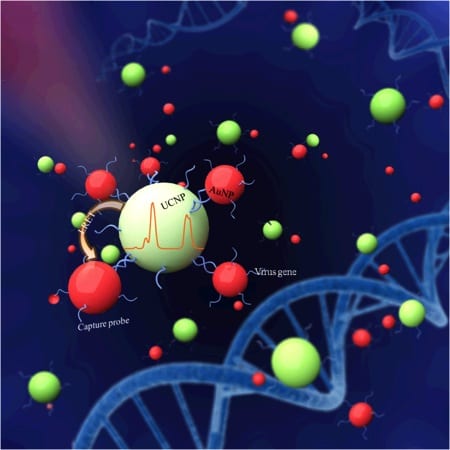In the newest issue of Advanced Science, researchers from Nanjing expose the advantages of using conjugated polymer nanoparticles for DNA sensing.
Bioinspired magnetic nanoparticles
A group seeks to reproduce the nanoparticle-synthesizing ability of magnetotactic bacteria.

Detecting a heart attack with gold nanoparticles
Researchers have developed a colloidal gold test strip for Cardiac troponin I detection based on microplasma generated gold nanoparticles.

Biological and nanotoxicity assay for cellular nanoparticles
The combination of flow cytometry and X-ray fluorescence enables semi-quantitative estimation of cellular SiO2 nanoparticles and their biological effects.

Inkjet printing and metal nanoparticles combine to shrink electronics
new research has combined inkjet printing and metal nanoparticle inks as a novel, low-cost solution for interconnect fabrication.

Upconversion nanoparticles as biosensors
A team in Hong Kong has developed a new method for detecting the lethal bird flu virus quickly, using a class of materials called upconversion nanoparticles.

Gold nanoparticles kill aggressive brain cancer cells
A collaboration between nano- and neuroscientists has resulted in a system that kills the most aggressive, and most common, form of adult brain cancer.

DNAzyme controlled aggregation of gold nanoparticles for DNA sensors and aptasensors
Researchers have developed a DNA biosensor system by controlling the aggregation of AuNPs using horseradish-peroxidase-mimicking DNAzyme.

Dimension Determines Biocompatibility of Graphite Oxide Nanoparticles
A team from Stanford University has investigated the effects of graphite oxide nanoparticles on mouse embryonic stem cells.
Light triggered spontaneous assembly of nanoparticles to nanovesicles
A research team have reported a novel and versatile strategy to assemble inorganic NPs into sub-50 nm vesicles.










